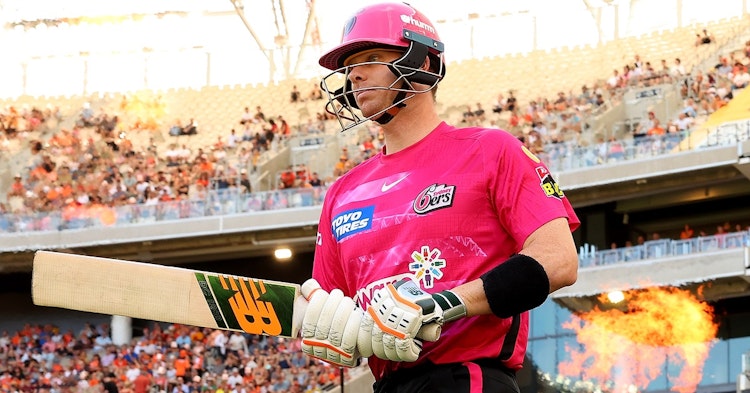BBL|12 Power Surge: Which Teams Best Used It Throughout 2022/23?
Last updated: Feb 15, 2023, 10:23PM | Published: Feb 1, 2023, 11:10PM
The Power Surge has been the longest lasting innovation brought into the Big Bash League after being implemented during BBL|09.
Here at Stats Insider, our experts have crunched the numbers throughout BBL|12 up until January 11th to provide some data behind what is preached to us in the league’s coverage.
Please Note: All statistics provided are true and correct up until January 11th, 2023.
What Is The BBL Power Surge?
According to Cricket Australia, the 'Power Surge' is a two-over period during which the fielding team is allowed only two players outside the inner fielding circle.
The batting side can call for this at any point from the 11th over of their innings. The fielding restrictions replicate those of the usual Powerplay at the beginning of an innings, which has been shortened to four overs.
With the Power Surge explained, let's take a look at the impact of the rule on the latest season.
Gerard Abood pic.twitter.com/tGB396vQon
— Josh Schönafinger (@joshschon) January 27, 2023
The Power Surge's Impact On BBL|12
In a vacuum, the Power Surge is designed to increase the scoring rate of the batting team and to change the dynamics of the game at any time.
Often, we hear of it being a double-edged sword – we’re told that teams lose wickets regularly and the reconsolidation required almost makes the surge moot.
There's no doubt that it changes games.
The average Surge score through until January 11th, 2023 is 20.39, a scoring rate of 10.67 per over, while 0.91 wickets are lost.
What is clear is that there’s a distinct advantage in batting second, to maximise Surge usage.
Teams using it in the second innings operate at a run rate of 11.21 and commonly take it earlier, in the 11th over, rather than the 13th over in the first innings.
Whether or not there’s a direct correlation between success in the Surge and victory is still relatively ambiguous – there’s a success rate of 55.17% in this season which is far from a convincing number, although a single outlier aside, teams that can maximise their Surge are generally more successful.
BBL|12 has been dominated by two teams, the same clubs that have turned the competition into a near duopoly over the course of its existence.
READ: How Do The BBL Finals Work?
Which Teams Have Best Used The Power Surge?
The numbers tell us that the Perth Scorchers have been the standouts when it comes to maximising the Power Surge during BBL|12 up until January 11.
With the bat, they’ve been nearly unstoppable. They’ve faced the equal fewest Surge overs in the competition alongside the Sydney Sixers, a sign of the sheer destruction both teams have demonstrated, yet have scored the second-most runs out of any team in Power Surges.
Two rules that should be introduced in all T20s:
— Prasenjit Dey (@CricPrasen) December 6, 2021
1. Power Surge from the BBL
2. Cut-off Time rule from The Hundred
At least Power Surge should be there in all T20s, if not both.
The Scorchers have operated at a run rate of 14.85 in these overs and have lost 0.71 wickets in the Surge on average. In comparison, the Sydney Thunder only lost 0.25 wickets per surge and scored at a rate of 11.93, the second-highest in the league.
Perth’s ability to flick the switch in the Surge is often created by a relatively conservative, risk-free start to the innings, enabling the likes of Aaron Hardie, Josh Inglis and Ashton Turnerto be the primary operators in these overs.
If they lose wickets at inopportune times, we have seen these batters slow down and not be afraid to leave the Surge until late, such is the supreme confidence they operate with. If they can win without using it, they will.
Which Teams Have Struggled In The Power Surge?
If we are to celebrate just how well the Scorchers can annihilate the opposition, then we are to meet what the data shows with the same level of energy in bewilderment for the Sydney Sixers.
The only other team with a positive Net Run Rate, a standard Sixers Power Surge over yields just 7.69 runs, just over half of what the Scorchers produce up until January 11.
This was quite clearly the worst use of the batting Surge in the league and perhaps speaks more to the tactics of master coach Greg Shipperd.
The Sixers’ openers are their most aggressive batters, while the middle-order tend to consolidate and aim to set up the all-rounders to swing big at the end – almost the inverse to how the Scorchers approach it.
Shipperd and his experienced team simply use the Surge to get it out the way, or leave it as late as possible so not to disrupt their usual plans.
It feels as though the Sixers are a complete outlier, as everything else passes the eye test and matches the result we see.
The 25 scored by Ellis and Andrews in the Power Surge is the most conceded by the Scorchers in a game this season #BBL12 pic.twitter.com/WaS9UvCXrH
— 7Cricket (@7Cricket) January 18, 2023
The Hobart Hurricanes have long been spoken of as the worst batting team in the Surge and the numbers back it up - their run rate of 10 was the third-worst and the loss of 1.88 wickets per surge nearly doubled the next team.
Most other teams matched their season fortunes with their batting in these overs. The Melbourne Stars and Adelaide Strikers were conservative during the Power Surge and were often unable to put big scores on the board. The Brisbane Heat and Melbourne Renegades didn’t mind losing a wicket, as they went at 11 to speed the rate up.
What's Most Important To Get Right In The Power Surge?
While there’s a semblance of tactical control to the batting Surge, when bowling, it seems to be a matter of keeping your most effective, reliable bowlers and aim to defend well.
Again, the Scorchers and the Thunder are clearly the two best exponents of the Surge, both conceding less than 9 runs an over, while averaging 1.22 and 1.38 wickets a Surge respectively up until January 11.
Similarly, fellow finalist Melbourne Renegades with an economy of 9.89 and averaging 1.33 wickets per surge are the next best team during that period.
While the bowling side of the Surge has largely followed script, again the Stars, Strikers and Hurricanes were expensive and took less than a wicket a game in these overs, the outliers continue to bewilder.
The Heat and the Sixers, are the two worst bowling teams in the Surge by far.
The Heat’s bowling in general has been its downfall up until January 11, although Spencer Johnson has been an improvement on Mark Steketee and helped ease the leakage of Michael Neser.
Still, the Heat’s economy rate per over is 13.31 in the Surge and they take just 0.57 wickets.
Bewilderment sums up the Sixers again, given they love Sean Abbott, Hayden Kerr and Ben Dwarshuis and often rely on them.
In the Surge across that period, they concede 14.5 runs per over and take 0.6 wickets per game.
Has The Power Surge Been A Success In The BBL?
While head-to-head success in the Power Surge has only given teams a marginal advantage in winning a game in BBL|12, it’s increasingly apparent that the tactically sound teams who seek to maximise these overs are the ones that make their way deep into a competition.
The Sydney Sixers remain the key outlier but really, as a team that has focused on recruiting experienced, aged stars in an increasingly younger competition, hasn’t the team always been the BBL’s biggest outlier?
Overall, the Power Surge has added a new layer to T20 cricket that prevents games from petering out too predictably, as we often see in other competitions.
As such, it wouldn’t surprise if this is the one replicable part of the BBL that can be taken onto the international stage at some point in time.



